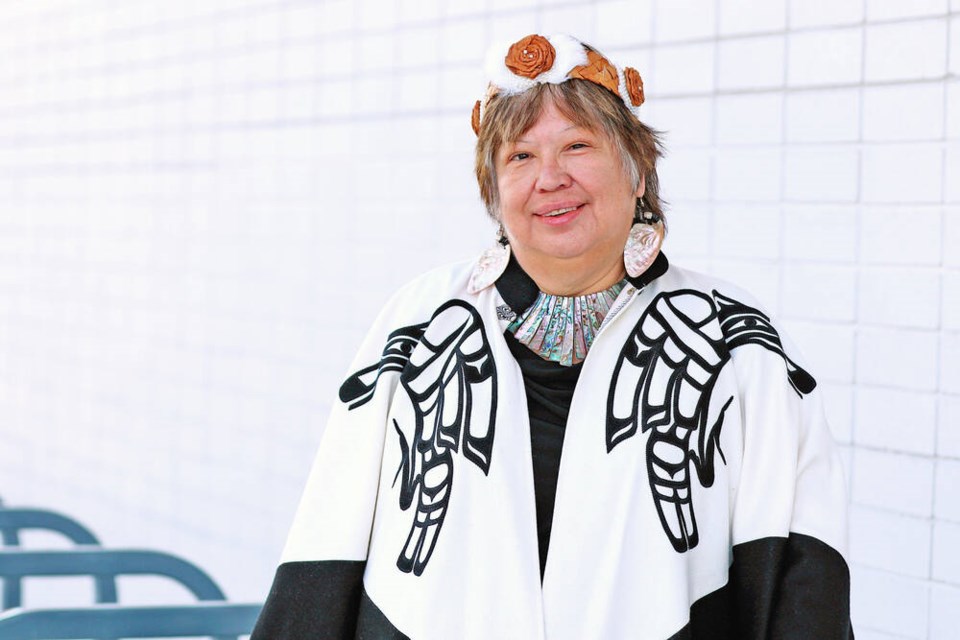The president of the Nuu-chah-nulth Tribal Council is standing firmly behind a proposal to revive a rail system on Vancouver Island.
Judith Sayers, Cloy-e-iis, a member of the Hupacasath First Nation, was one of the founding board members of the Island Corridor Foundation and served as a co-chair of the board, giving her two decades with the foundation.
In an email, Sayers said rail “has many benefits for First Nations, from tourism to taking traffic off the road and reducing greenhouse gases.” In addition, the highway would not need to be expanded — something that would take away greenspace, she said.
The foundation, which owns the corridor running from Victoria to Courtenay along with a spur to Port Alberni, is promoting a modern railway system. The line was established in the early 1900s, but passenger train service was halted in 2011 because of deterioration of the tracks.
The organization, made up of 14 First Nations and five regional districts, has mapped out a plan for passenger and freight service. The foundation’s chief executive said recently it would cost $350 million for infrastructure, plus another $50 million for operating costs and that he expected it would need to be subsidized.
Supporters view the return of rail as a sensible step, saying it would deliver economic benefits up and down the Island and provide transportation for goods.
But several First Nations are speaking out against the idea.
A provincially led engagement report said there is limited interest among First Nations in restoring rail service, although there was some interest in being involved in running a rail system.
At a March 1 meeting, five of six First Nation members on the foundation’s board quit after a motion calling on the organization to oppose the railway failed.
Coun. Brent Edwards of the Snaw-Naw-As (Nanoose) First Nation, one of the board members who quit, said there are concerns about access and safety to First Nations communities if railway service resumes, and the impact that could have on social and economic development.
The Snaw-Naw-As First Nation went to court to win back the part of the corridor running through its land. It lost its case in the Supreme Court of B.C. and then went to the B.C. Court of Appeal. That court imposed a deadline of March 14 for the federal government to announce whether it will put in funds for a revived railway.
If the federal government does not support rail, that leaves the door open for the band to seek the return of 10 acres of corridor land that cuts through its community.
Sayers, who is no longer on the foundation’s board, said the motion that was put forward was not possible without first changing the organization’s constitution.
More work is required with First Nations, she said. “There is a history that needs to be addressed between First Nations and the federal government [that] took the land from them for the railroad. ICF always supported that.”
Sayers had long spoken in favour of a rail system.
In a May 2021 opinion piece, she and Phil Kent, her co-chair on the foundation’s board, defended the rail system against those who support converting it to a multi-use trail, saying it would limit the corridor’s use to people who are physically capable of using it.
“It will leave behind many Island residents, like anyone who has significant distances to commute — for example, those living in Duncan who need to get to Nanaimo, workers living in Shawnigan Lake who need to get to jobs on the waterfront in Victoria, or those who need to travel for medical reasons,” they wrote.
“Many Island families need reasonable transportation options to stay connected to one another. The corridor exists for the benefit of all Islanders and must be used accordingly.”
Daniel Arbour, a foundation board member representing the Comox Valley Regional District, said in a letter going before the district board on Tuesday that there has been limited information from the provincial and federal governments about their intentions. The provincial budget presented on Tuesday did not identify funding for a rail corridor.
A federal official told the Times Colonist on Thursday that a decision has not yet been made.
Arbour’s letter to the regional district presents two options. One is for the regional district to simply wait until the end of March to see how the federal and provincial governments respond to the situation.
The second is to write both provincial and federal governments expressing concern about the situation. It would ask ministers at both levels to signal their intent prior to the end of March regarding additional First Nation engagement, and to address investment in the corridor, potential support for alternative uses or abandonment of the railway, and/or reversion of its land to First Nations communities.




